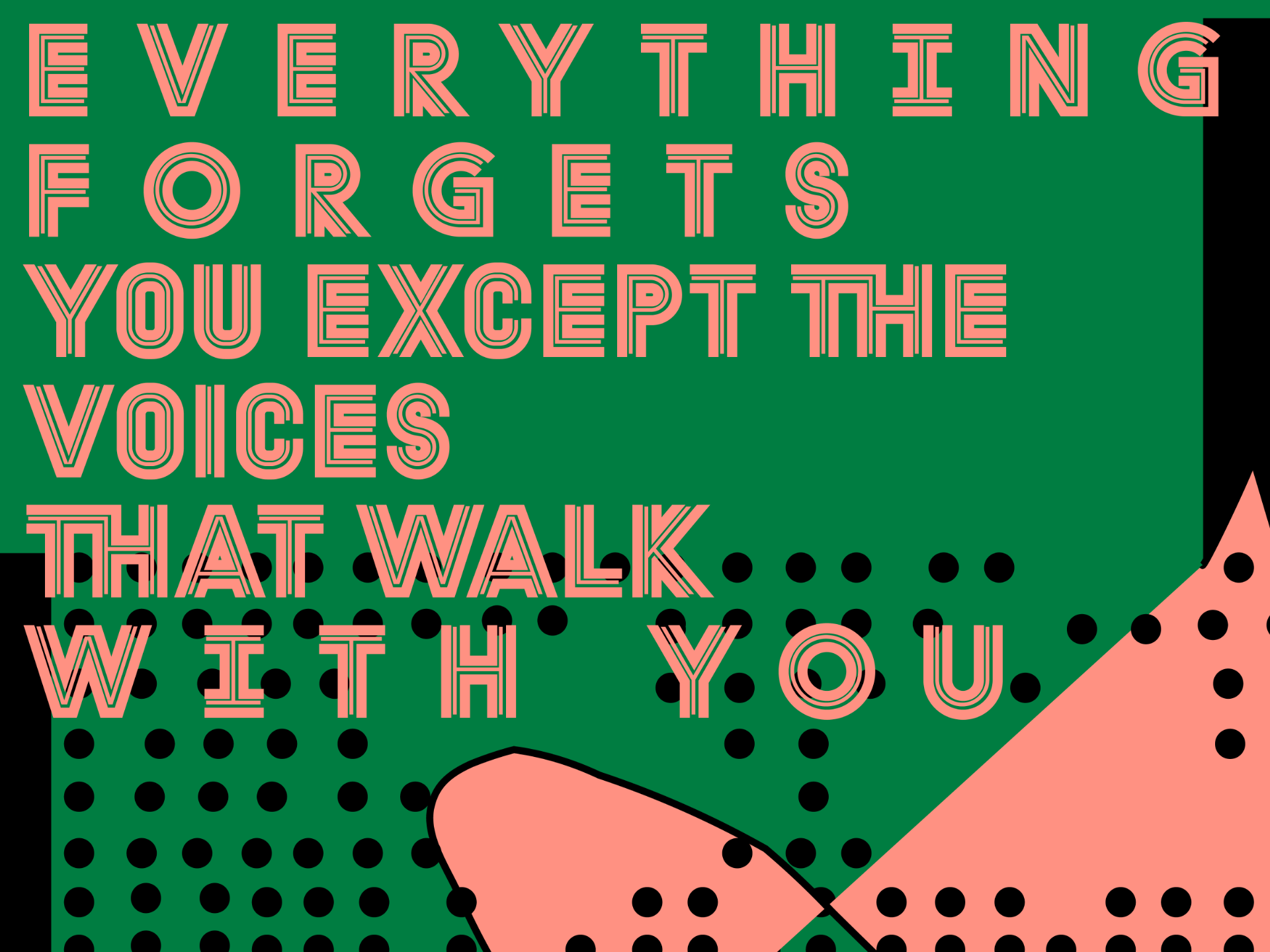Ultrasanity.
ON MADNESS, SANITATION, ANTIPSYCHIATRY AND RESISTANCE
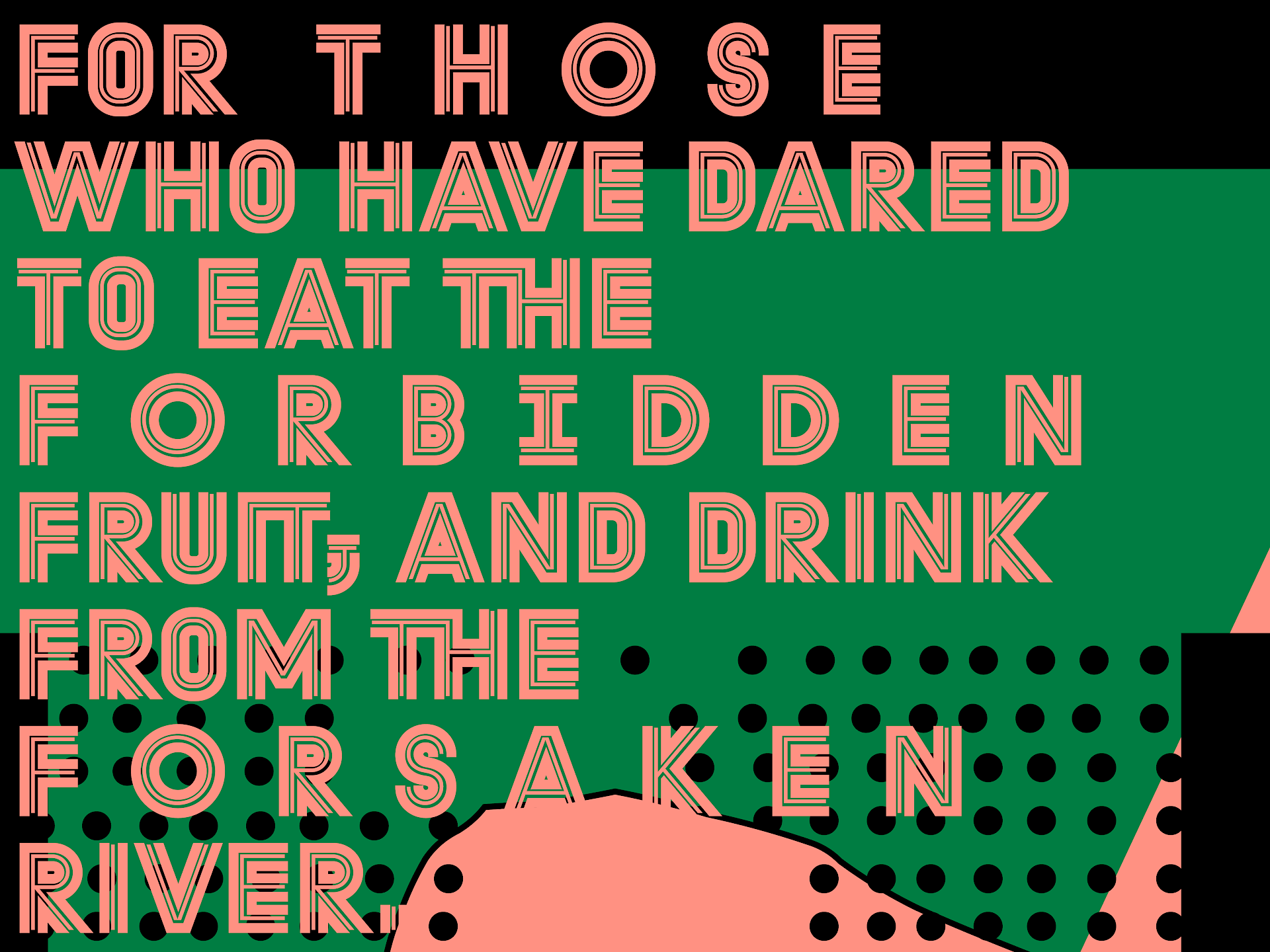
Ultrasanity Chapter 4: Exhibitions in Berlin
OPENING at ifa Gallery 13.12.2019 19:00
EXHIBITION 14.12.2019–09.02.2020 Tues – Sun 14:00–18:00
WITH Leo Asemota, Virginia Chihota, Jaswant Guzder, Tracey Rose, and Eva Kotatkova
OPENING at SAVVY Contemporary 14.12.2019 19:00
EXHIBITION 15.12.2019–02.02.2020 (extended) Thurs–Sun 14:00–19:00
WITH John Akomfrah, Ulf Aminde, Leo Asemota, Yassine Balbzioui, M’Barek Bouhchichi, Virginia Chihota, Larisa Crunțeanu, Alessandra Eramo, Pélagie Gbaguidi, Frederick W. Hickling, Lukas Hofmann, Immy Mali, Teresa Margolles, Nathalie Mazeas, Lavar Munroe, Adjani Okpu-Egbe, and Beatriz Santiago Muñoz
INVOCATIONS 25.01.–26.01.2020
WITH Ghayath Almadhoun, Leo Asemota, The Brother Moves On, Debbie Ann Chambers, Alessandra Eramo, Dora García, Patricia Gherovici, Jaswant Gudzer, Maleem Habib, Hearing Voices Café, Frederick W. Hickling, Lukas Hofmann with mirabella paidamwoyo dziruni, Scott Hopper, Luzek Marny, Adrian Quentin Vardi, Elena Veleckaite and Nico Walker, Taoufiq Izeddiou, Eva Kot'átková, Angela Melitopoulos, Jota Mombaça, Dorothée Munyaneza, Adjani Okpu-Egbe, Elisabeth Tambwe, Urban Feral, Patrick Vernon, and others
SAVVY Tours in SAVVY Tongues
10.01.2019 17:00 in English with Kelly Krugman
23.01.2019 17:00 in English with Kelly Krugman
02.02.2020 16:00 in German with Lynhan Balatbat-Helbock
ULTRASANITY, a project in four chapters, situates itself within the long term research project at SAVVY Contemporary with the title THE INVENTION OF SCIENCE that investigates science’s entanglements with the colonial enterprise and the capitalist project. ULTRASANITY challenges conventional methods and perspectives on mental health and questions medical (mis)conceptions of psychopathologies by reconsidering them in the context of coloniality, racialisation, objectification, and patriarchal oppression. Deeply entangled with our previous reflections on land struggles and toxicity, with this project we engage again with traumas and fears of displacement and contamination, this time offering an opportunity to ponder the notion of madness beyond a Western understanding, but also that space of madness as a possibility of resistance, of resilience, and of deliverance.
Over the course of one year, we collaborated with visual and performance artists, musicians, patients, healers, clinicians, cognitive scientists, scholars and practitioners to unfold this project jointly with ifa Gallery Berlin, the Association of Neuroesthetics (AoN), the Gnaoua Festival (Morocco) and Picha Art Lubumbashi (DRC).Together, we interrogated the grammars of violence inscribed in universal therapeutic models and the pharmacologisation of care still practised today. Beyond a romanticisation of madness, the project seeks to address the heuristic and generative potential of certain forms of delirium. Beyond that we are interested in the fundamental significance of community engagement and of spiritual, systemic, intra-generational histories in formulating healing strategies.
With this exhibition, performative and discursive programme between ifa Gallery and SAVVY Contemporary, we navigate the potentialities of ULTRASANITY, moving beyond the dichotomy of insanity as the opposite of sanity, to inhabit the liminal space that lies beyond the norm, stripped of the process of normalisation and control.
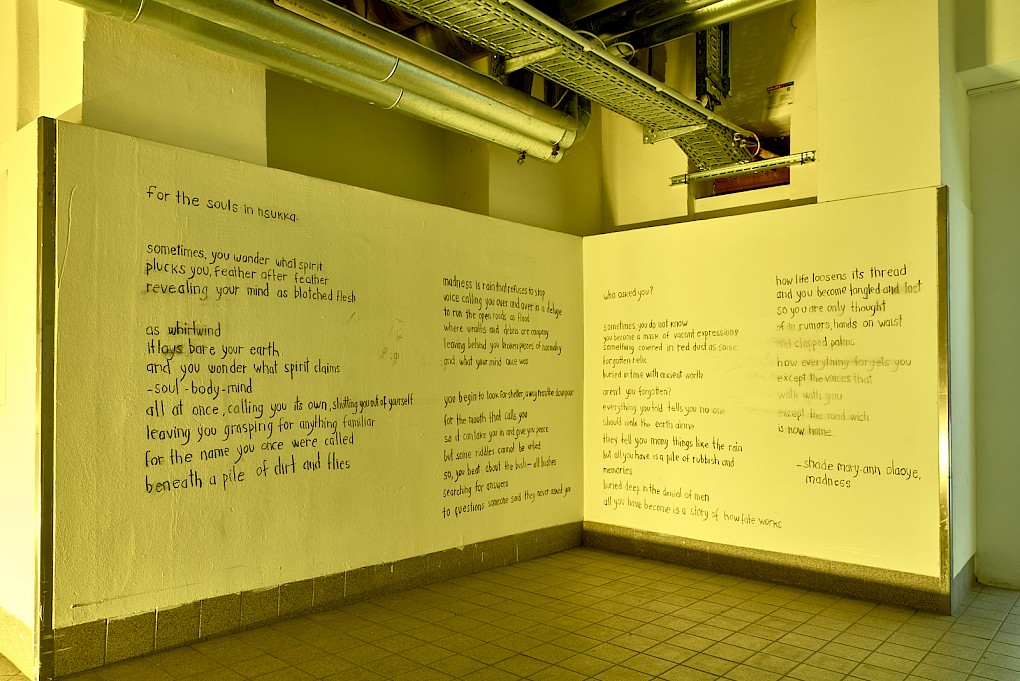
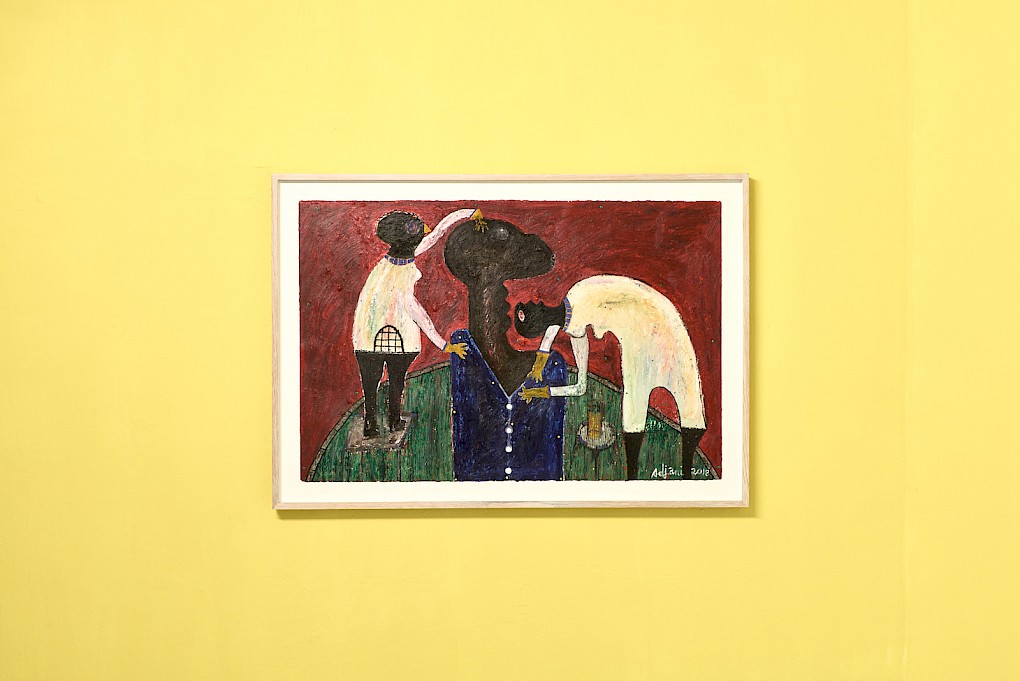
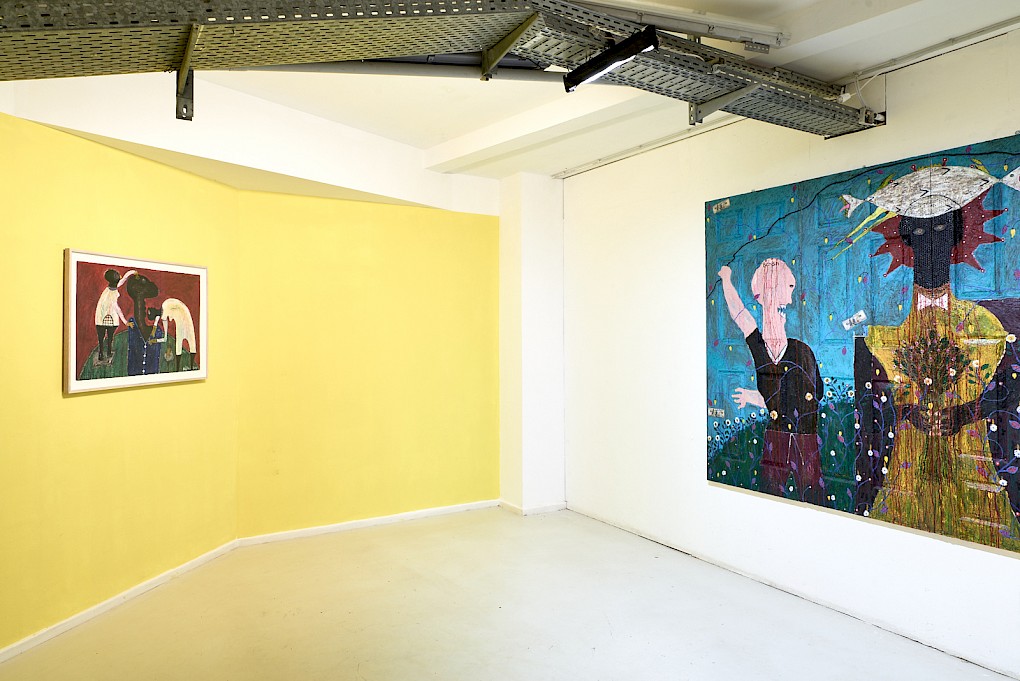
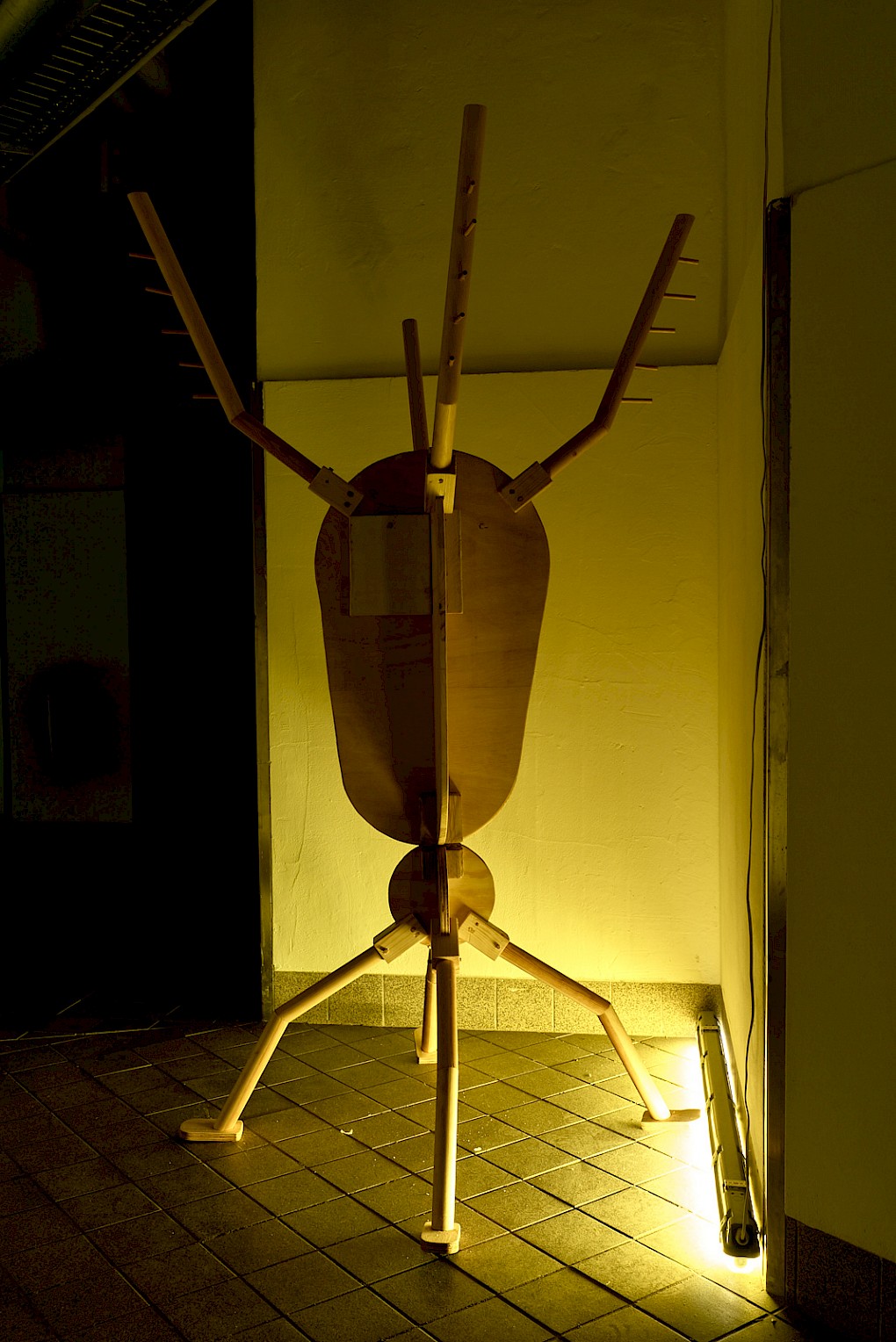
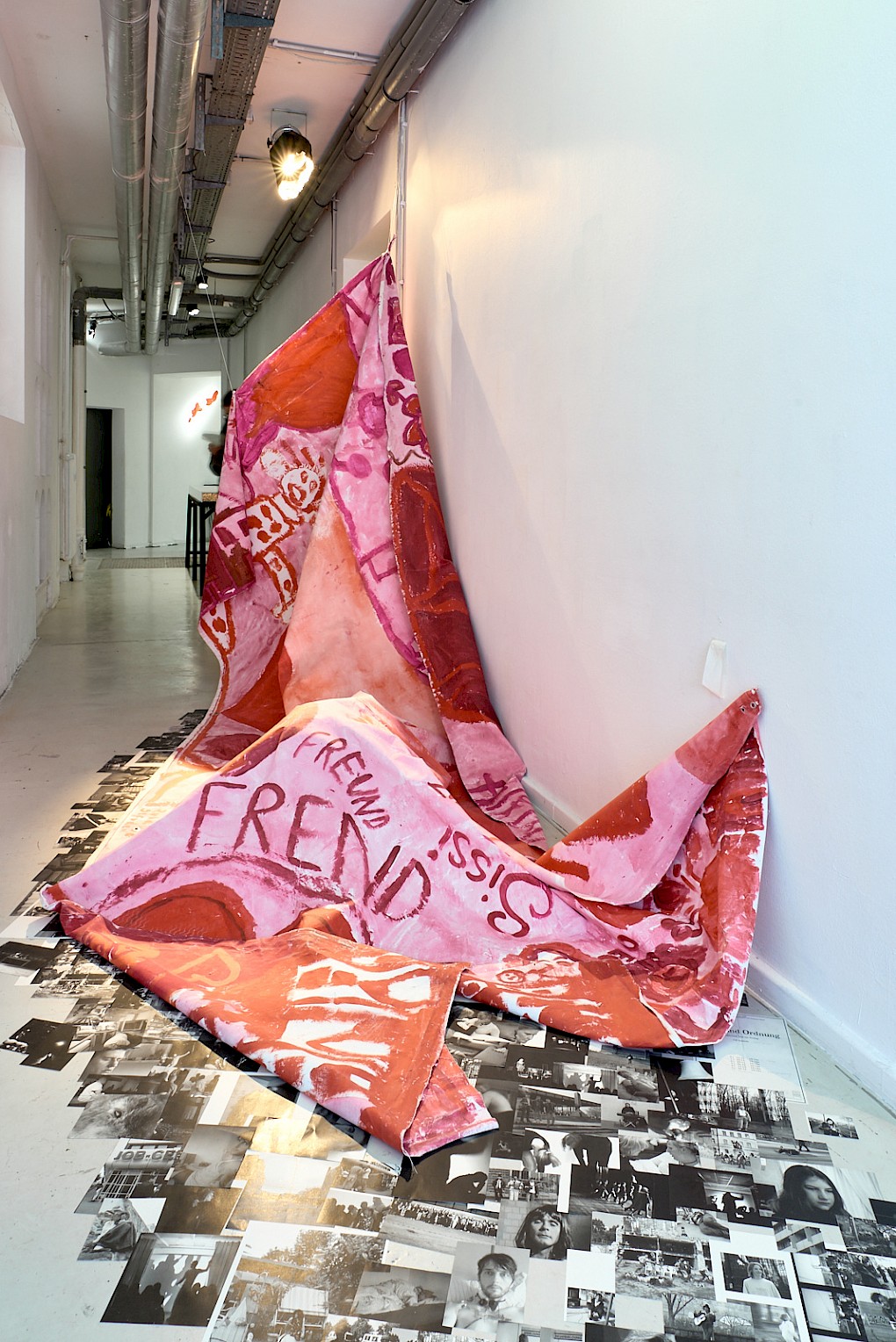
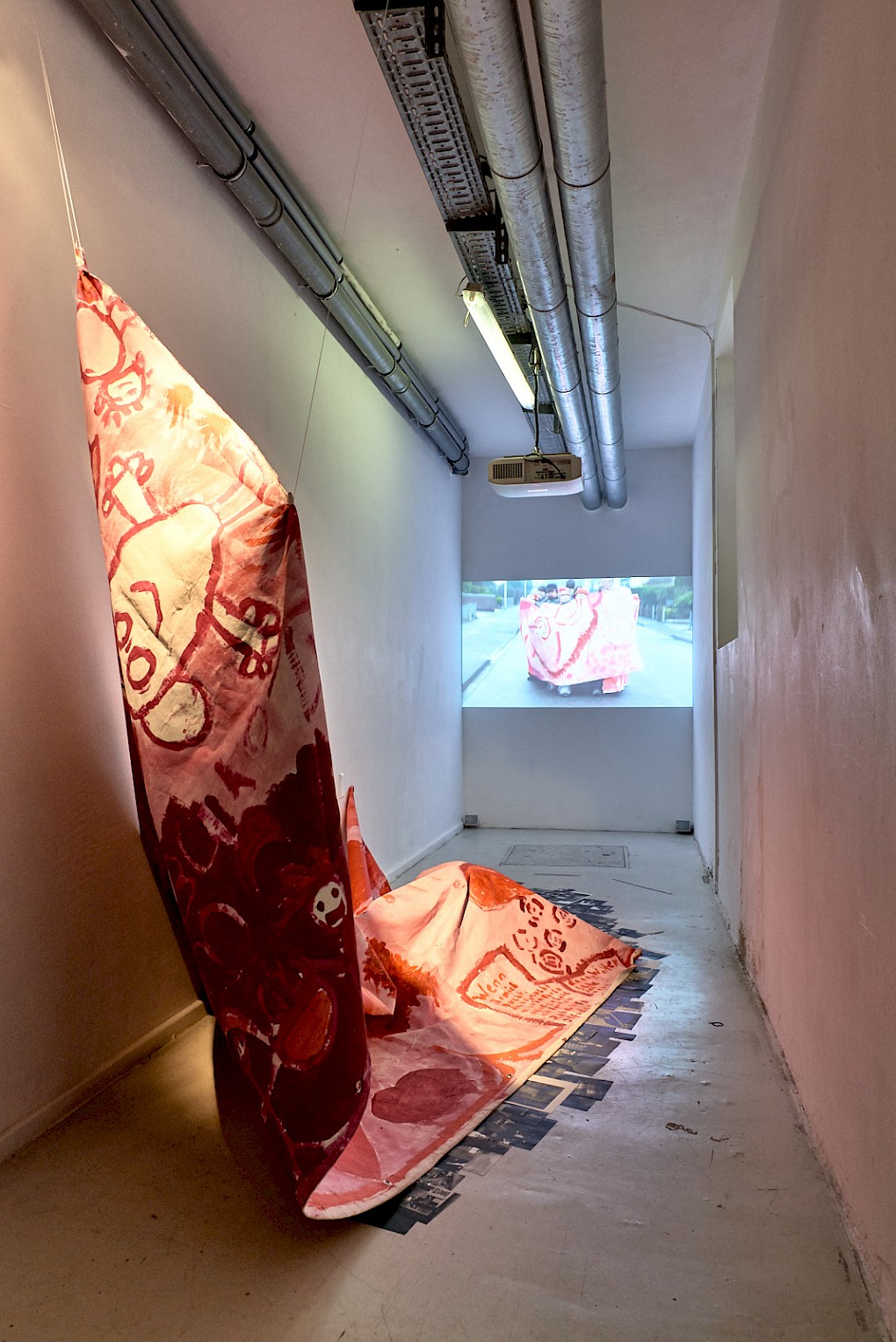
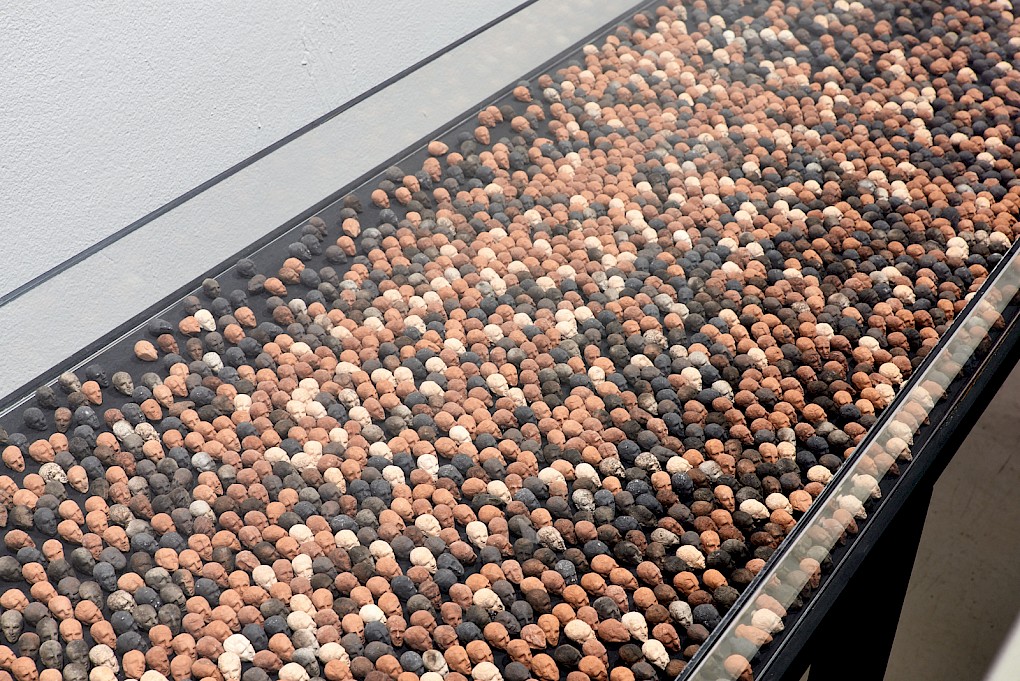
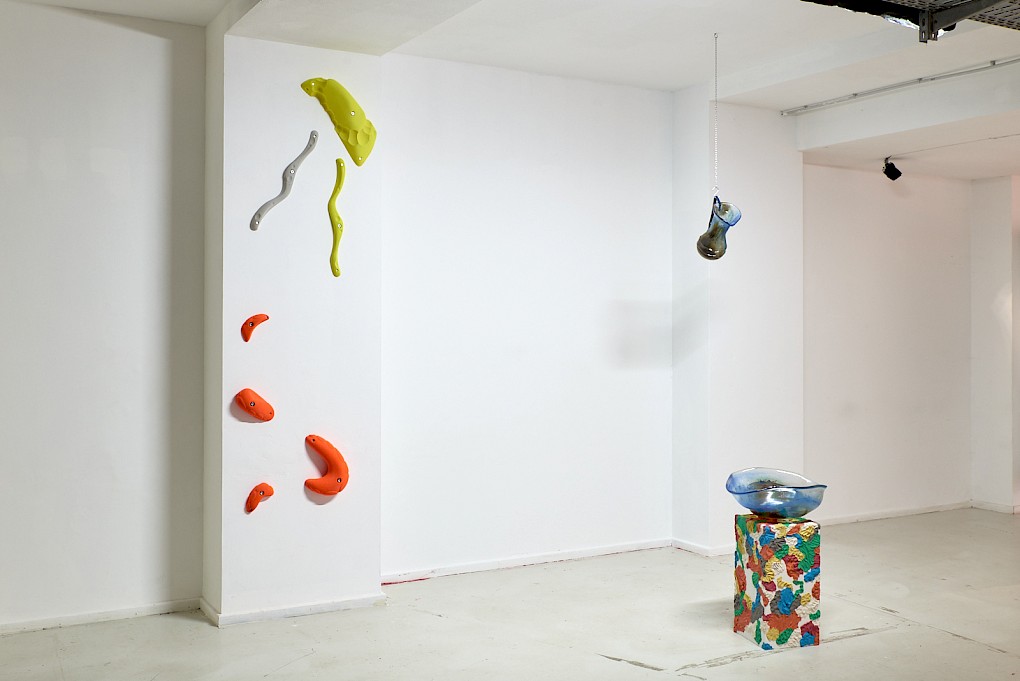
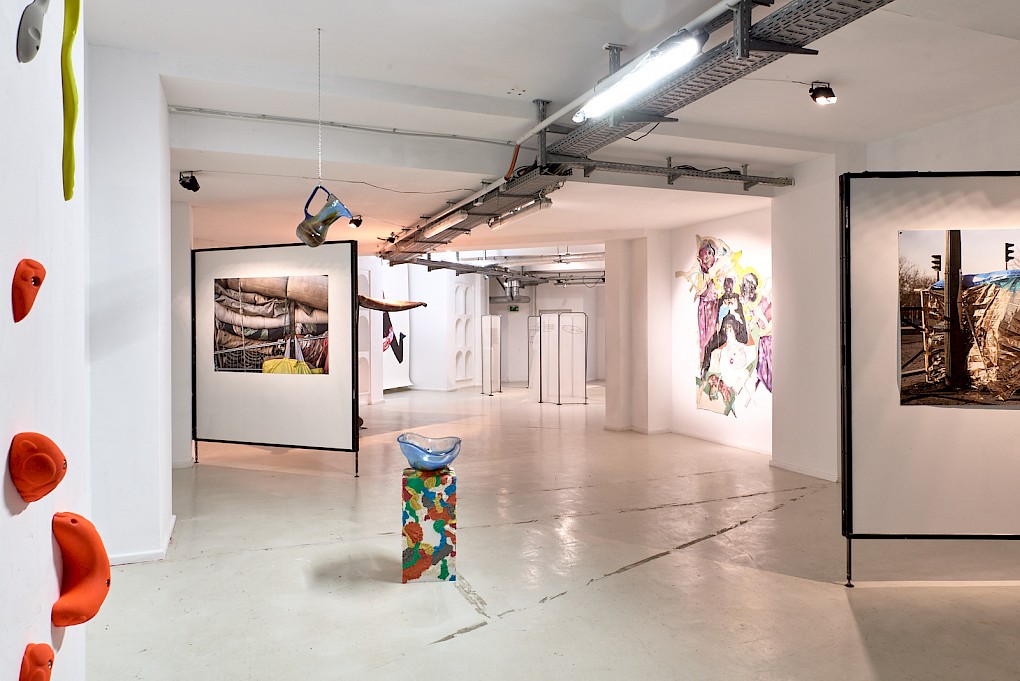
...for it is not man but the world which has become abnormal…
Madness is not a safe space, not a place to walk in for an elusive diversion. Madness burns. It burns in a spectrum – from without and within – sometimes combusting everything in it and around it, crumbling the possibility of certainty and comprehension. But amidst smoke and flames, fire also produces light, and in darkness, it gives us the possibility of seeing through the thickness of the gloom.
As Antonin Artaud wrote in Van Gogh: The Man Suicided by Society, those having superior lucidities and luminosity, those with the gift of special faculties and spirits, have been too often declared insane for breaking out of societal norms. To compose a partitura of statements and a chorus of different voices, we deliberate on different trajectories, such as: the construction of insanity and madness, as well as rethink madness in the context of norms and normalisation; the entanglements between madness, colonialism and coloniality, and the relation between sanity and sanitation and the politics of segregation; madness as a tool of resistance, of escape, and refusal (i.e. rebellion, hysteria, tarantism and other disruptive behaviours catalogued with medical formulations and treated as illnesses); and the power of intra-generational histories and community in formulating healing strategies.
We begin, at SAVVY Contemporary, with Immy Mali and the imaginative powers and pains of childhood – a sonic tunnel leads us into the exhibition by way of polyglot stories, nursery rhymes, religious and play songs from her youth, touched by trauma’s entanglements with the postcolonial landscape of Uganda: a cave where distant voices coming from inner spaces may disorient us, or take us by hand into the hyperlucidity of derangement. An intervention by the production team of Ultrasanity then asks you to leave excess possessions of material and spirit behind on their built structure, made of leftover constructions from the exhibition: from coats and umbrellas to frustrations and failures, you are welcome to abandon here any heaviness: of spirit and of the physical. Adjani Okpu-Egbe explores the cathartic space of painting as a form of healing while making the plea for revisiting tombstones of history, activism, and the repositioning of labels of (in)sanity. M’barek Bouhchichi’s installation-accumulation of several thousand small heads manually produced out of the same mold have faces bearing no specific markers, inspired by the words of a potter he met in Tunisia who said “we are all made of earth”, crafting a horizon as palpable as it is out of reach. Ulf Aminde presents his collaboration with the artist group Wilderers from the Foundation Diakonie Himmelsthür in Hildesheim, pondering creativity and cooperation questioning how group dynamics and identity arise. John Akomfrah tells of jazz legend Buddy Bolden’s struggles with schizophrenia, hospitalization, and the violence of racist state powers’ capacity to make disappeared those in precarious positions. Nathalie Mazeas presents the architectural spaces and homes of the homeless in Paris, confronting us with the capacity of resilience in crisis. Lavar Munroe problematizes the notion of the spectacle with his painted portrait exploring family, non-white diseased bodies, human zoos, and mental and physical challenges as a means of entertainment. Through the work of Teresa Margolles, we encounter the shadow, the dark space of the gloom, here evoking the problem of systemic gender violence against women, in Bolivia and around the world. For the artist, the dark shade represents also a membrane of protection and intimacy. Alessandra Eramo’s sonic work on the freedom that resists in the female voice traces the wild, bestial, untrained, and vulnerable voice of inner agitation and ritual healing by means of the tarantula spider’s tale and its inscribed, mythic memory in her region of Southern Italy. Larisa Crunțeanu combines reality and fiction to address the emotions of women that have been historically disregarded or treated as somatic illnesses in light of social etiquette, public space, motherhood, labour, and justice. Beatriz Santiago Muñoz delves into Puerto Rican writer and activist Elizam Escobar’s anti-diaries written during his time spent serving 19 years in US prisons for the crime of seditious conspiracy: evidencing his extreme and sometimes painful attention to mental and sensorial processes. Yassine Balbzioui opens a door to eccentricity as an entry into a richer world, investigating madness as an absolute freedom of creation. Frederick Hickling shows an archive of photographic materials and documents from his activity and experimentations in deinstitutionalisation in the 70’s in Jamaica: the MADnificent Irations, stemming from psychohistoriographic cultural therapy, a new era in world psychiatry. Pélagie Gbaguidi probes the insanity of the societal, reflecting on her participation in Ultrasanity’s chapters in Venice and in Lubumbashi, where she made visible seismograms of geographic pain on San Servolo’s island, an island fueled with its history as a psychiatric hospital, and in DCR worked with female workers of coal mines in Kipush to create anti-pollution masks for their protection. Lukas Hofmann investigates the idea of the skin as a permeable border, aiming to open and close wounds inflicted by the contemporary condition, causing both restlessness and relief.
At ifa Gallery, Eva Kotátková peers into the clothing of children to make visible their worn places, asking us to consider the language of memory left in their holes and tears. Jaswant Guzder, a therapist who uses drawing as a filter between her patients and herself, subverts the canonical trope of the “outsider” artist, her visual works being an extension of her therapeutic adventures in collective decolonization. Virginia Chihota lays bare tensions of personal experiences, plummeting us into depths to explore anxiety, turmoil, and the remedies within. Leo Asemota presents a sonic playlist along with various findings that contemplate microcosms of madness. Tracey Rose drifts together with various unclassifiable and marginal characters in a carnivalesque subversion prioritizing the freakish, the strange, and the alien.
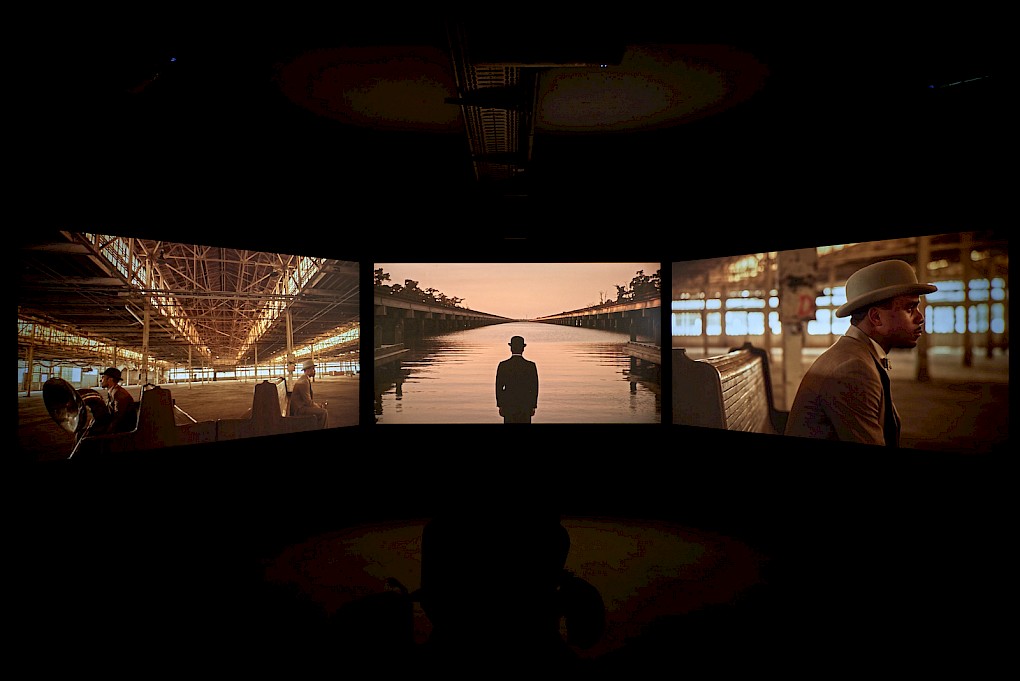
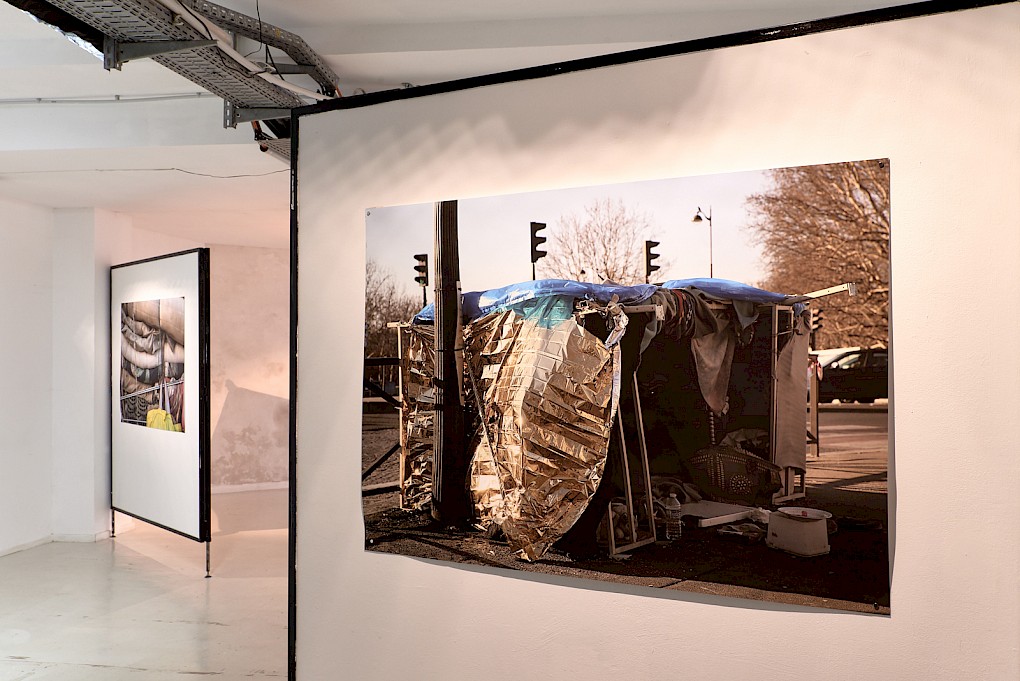
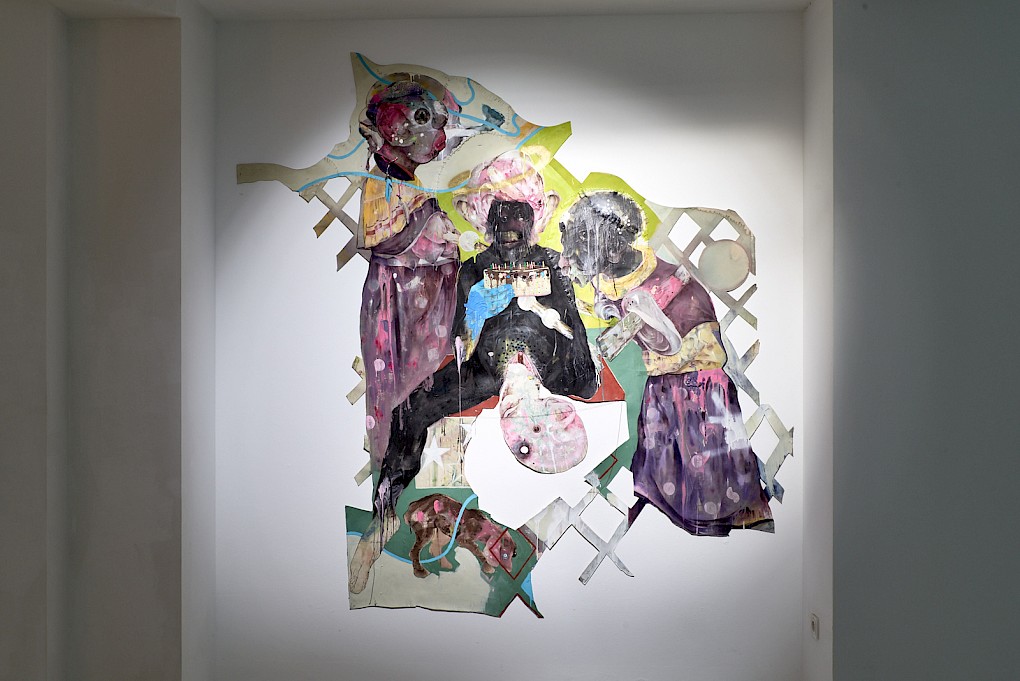
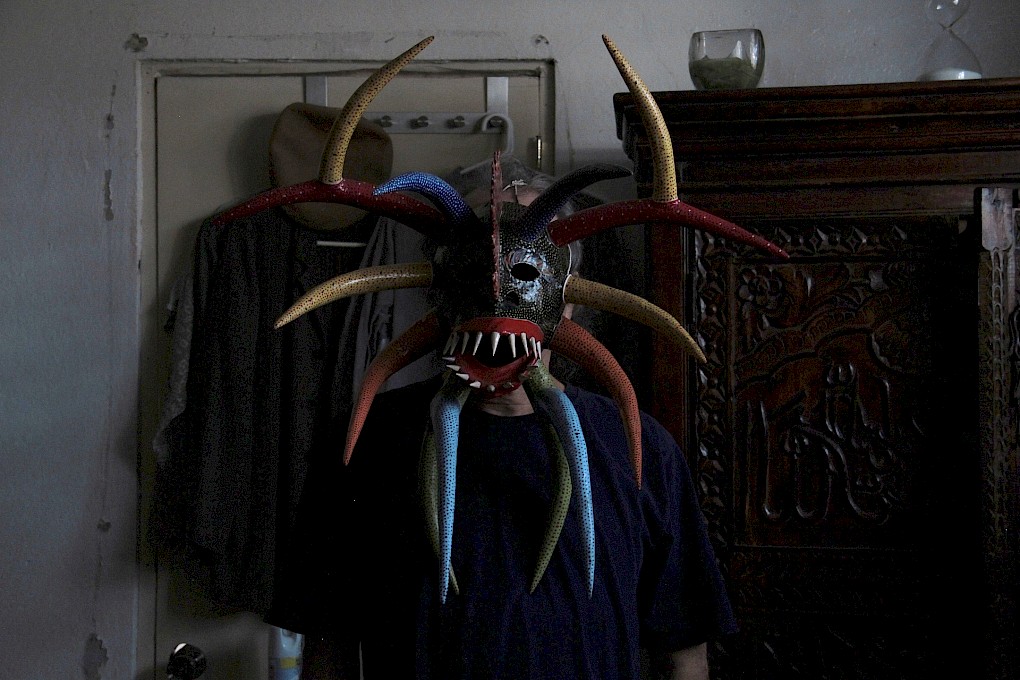
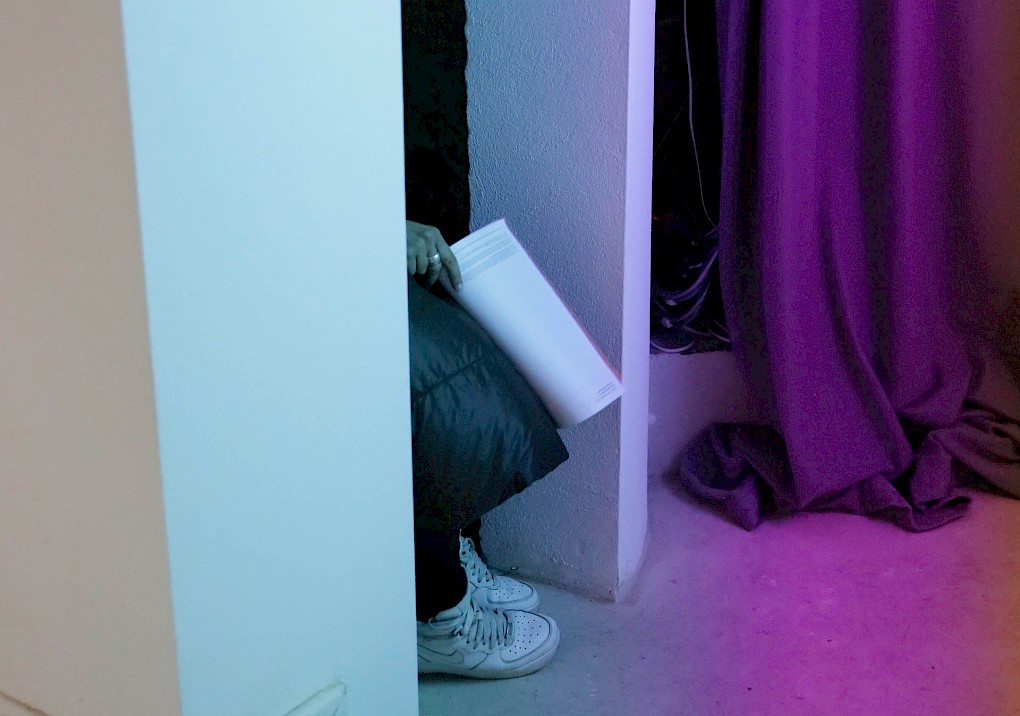
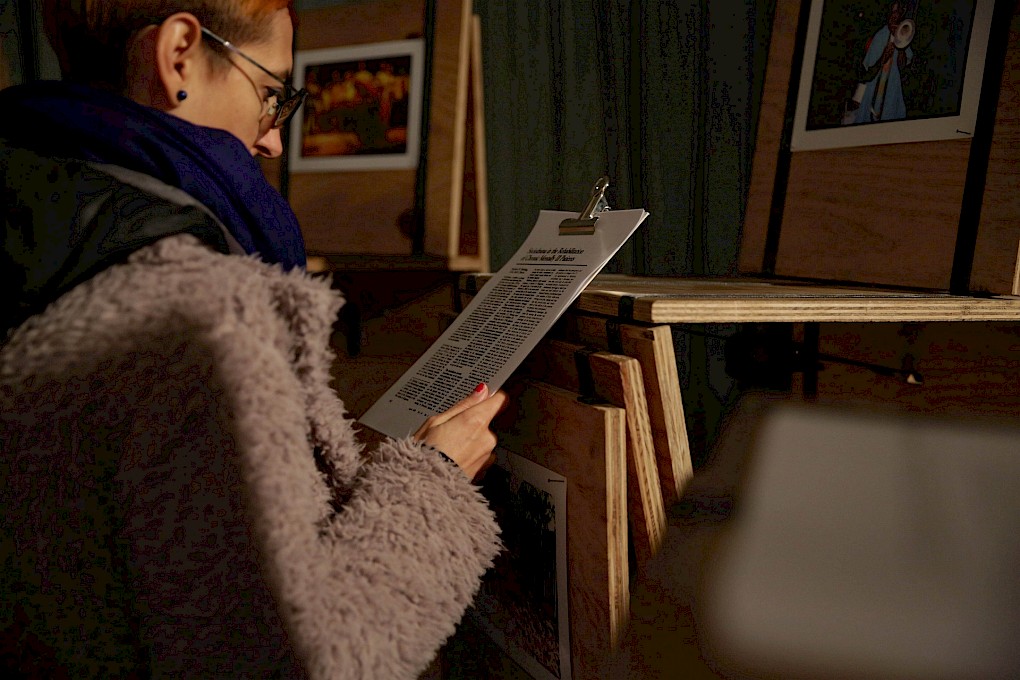
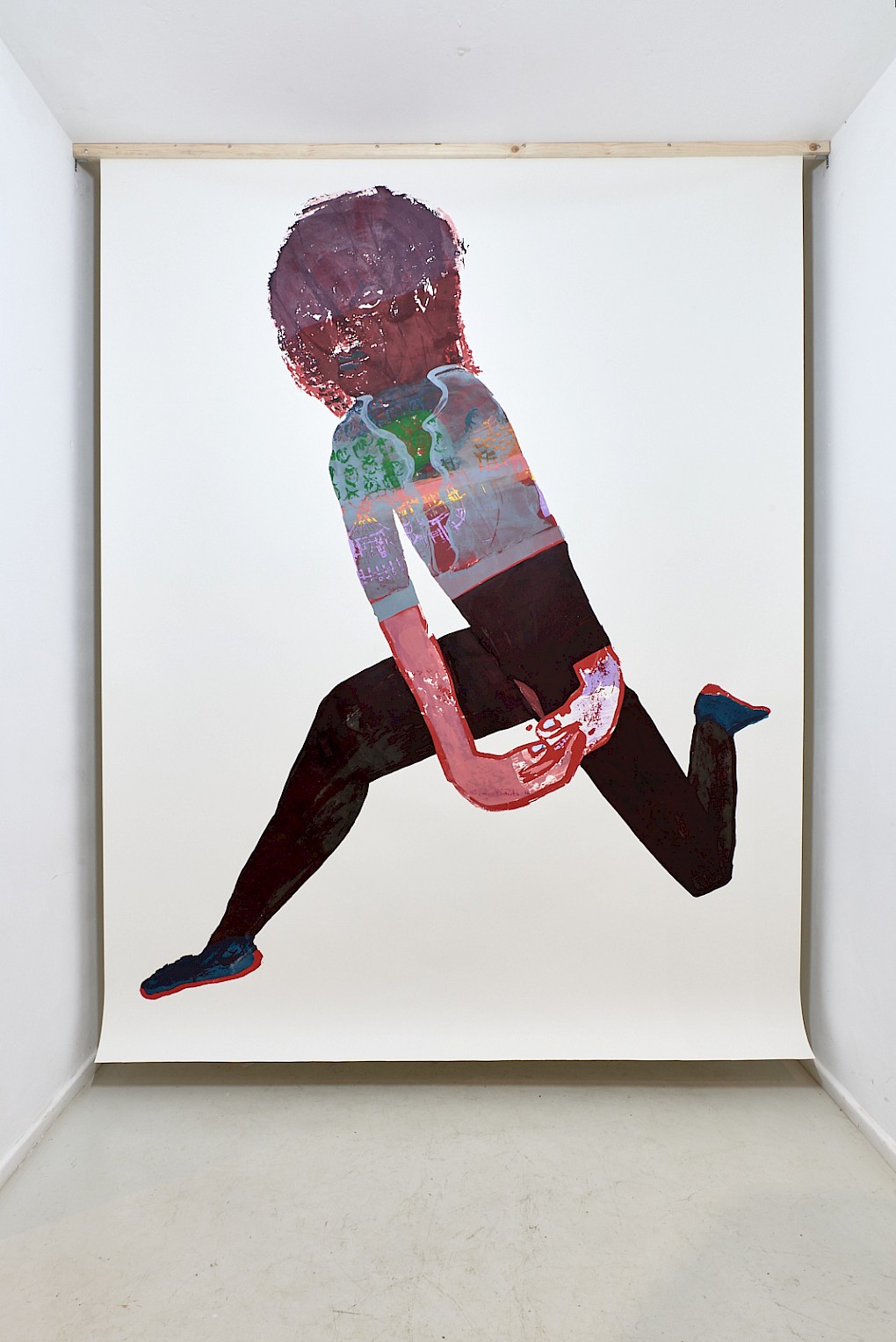
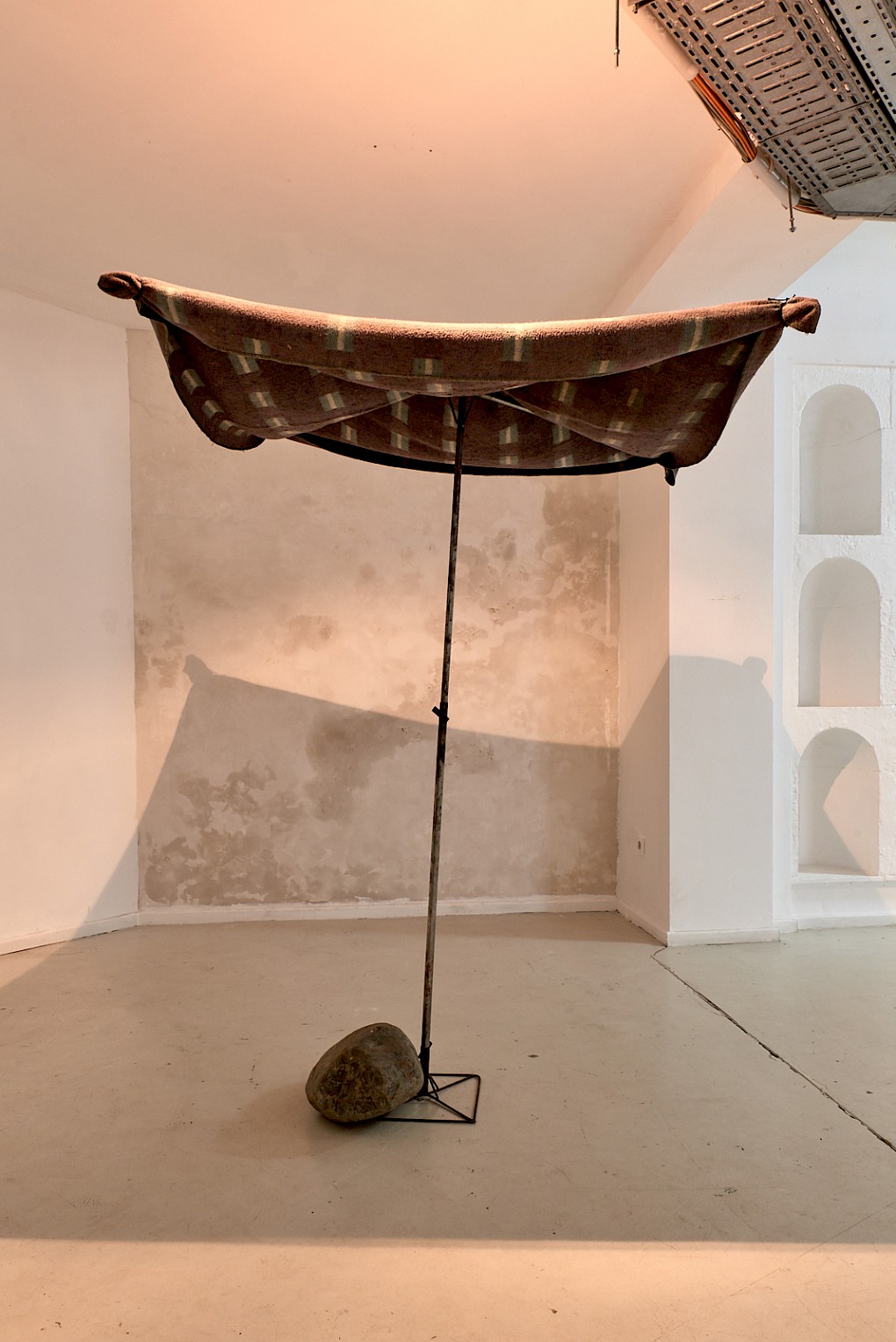
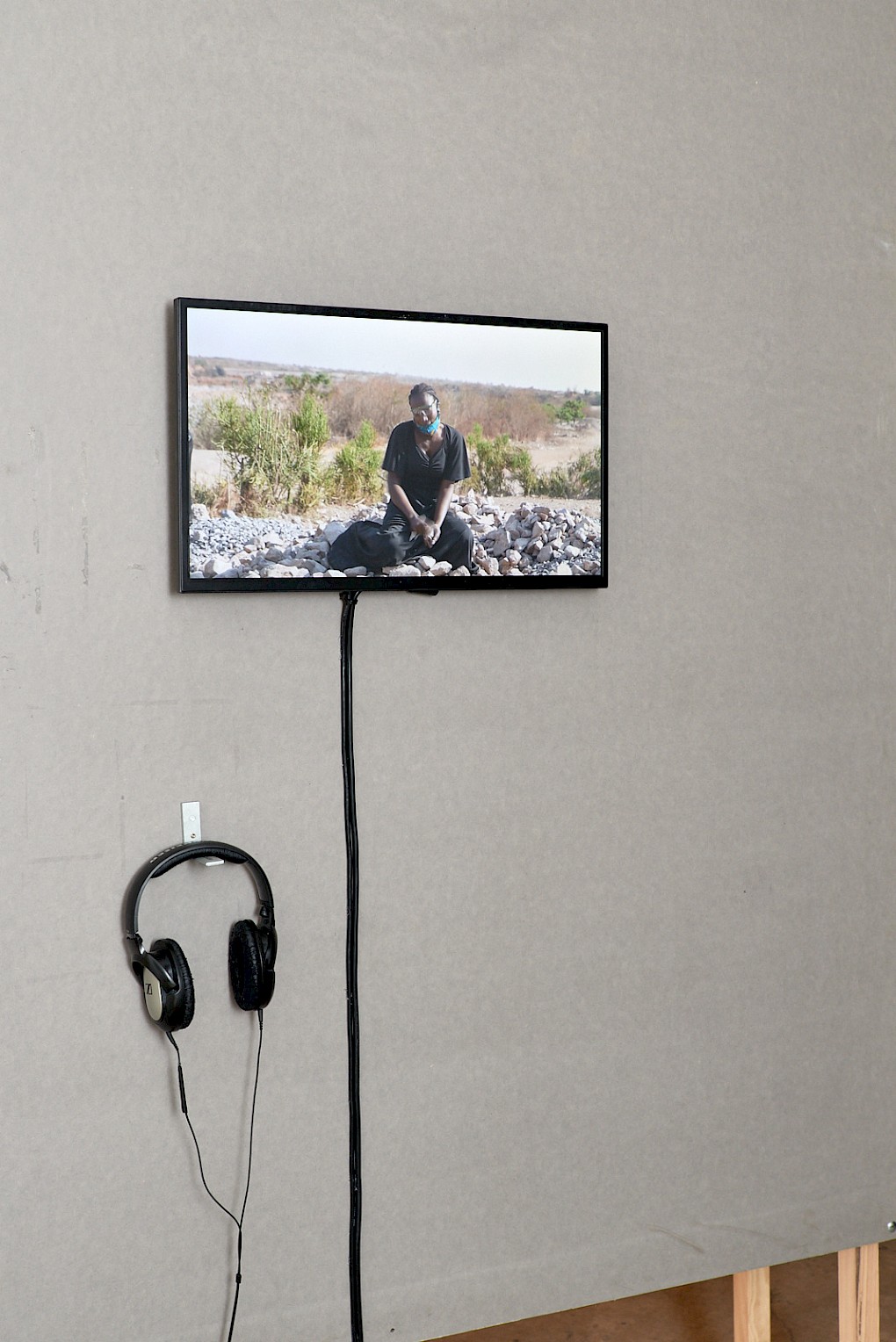
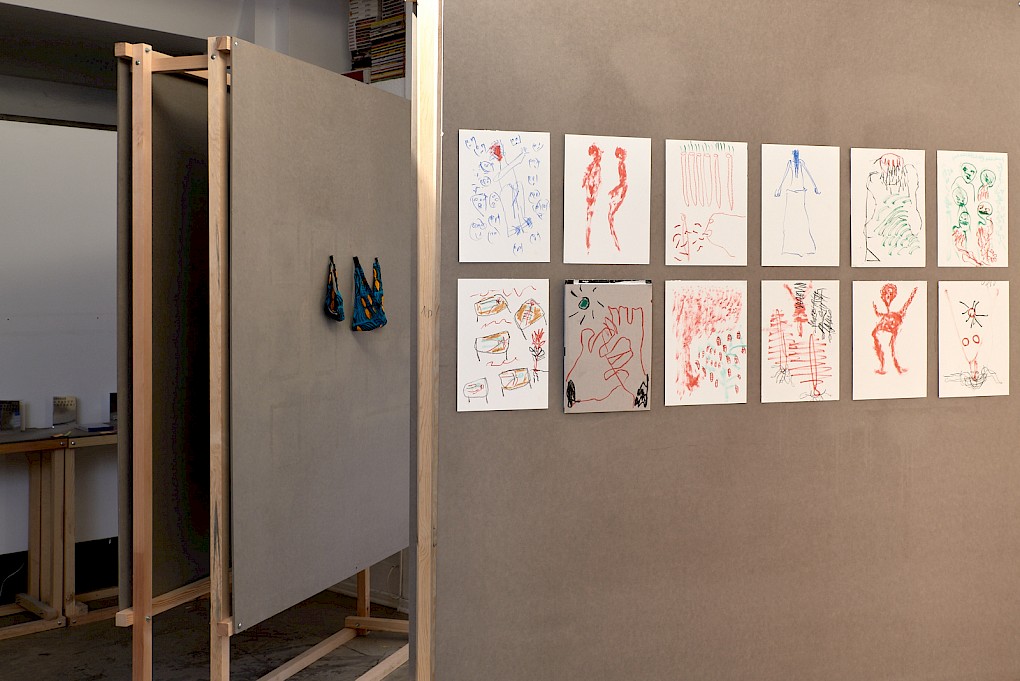
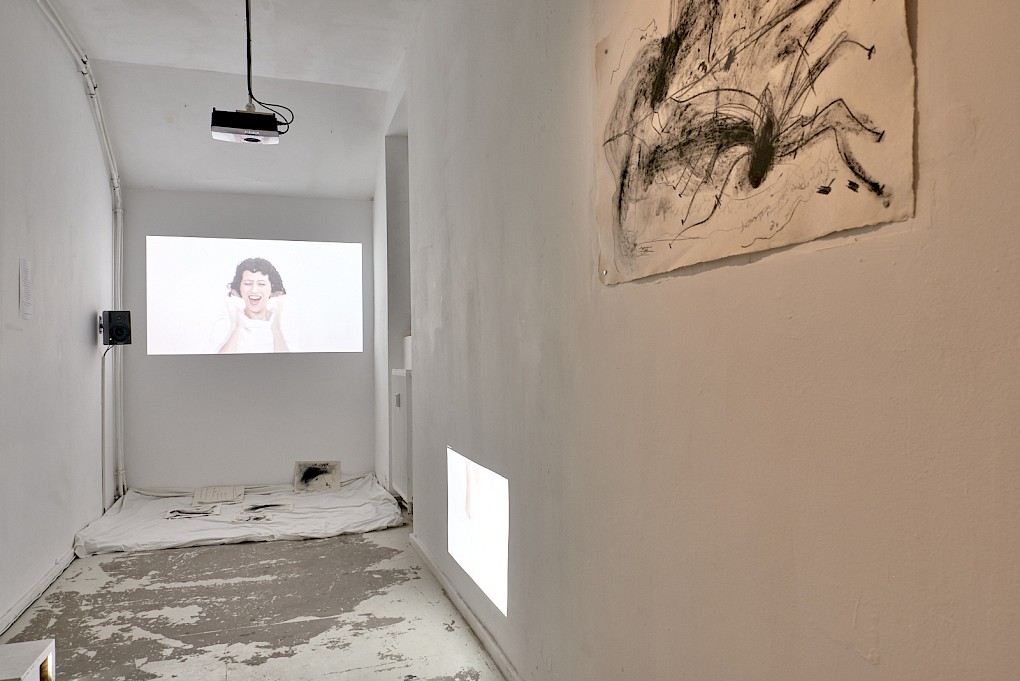
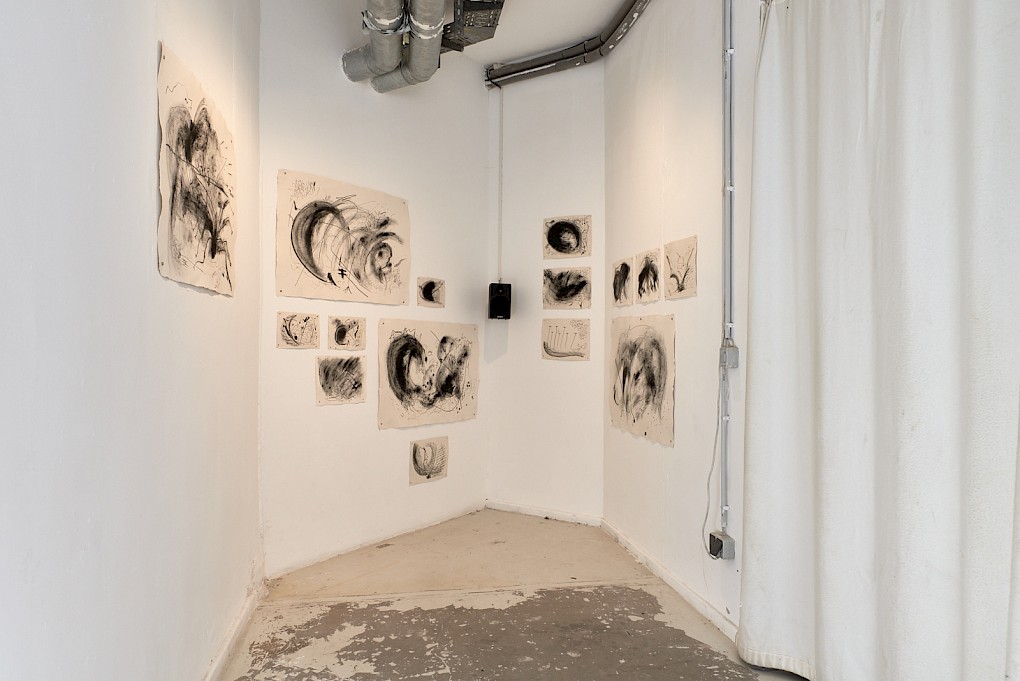
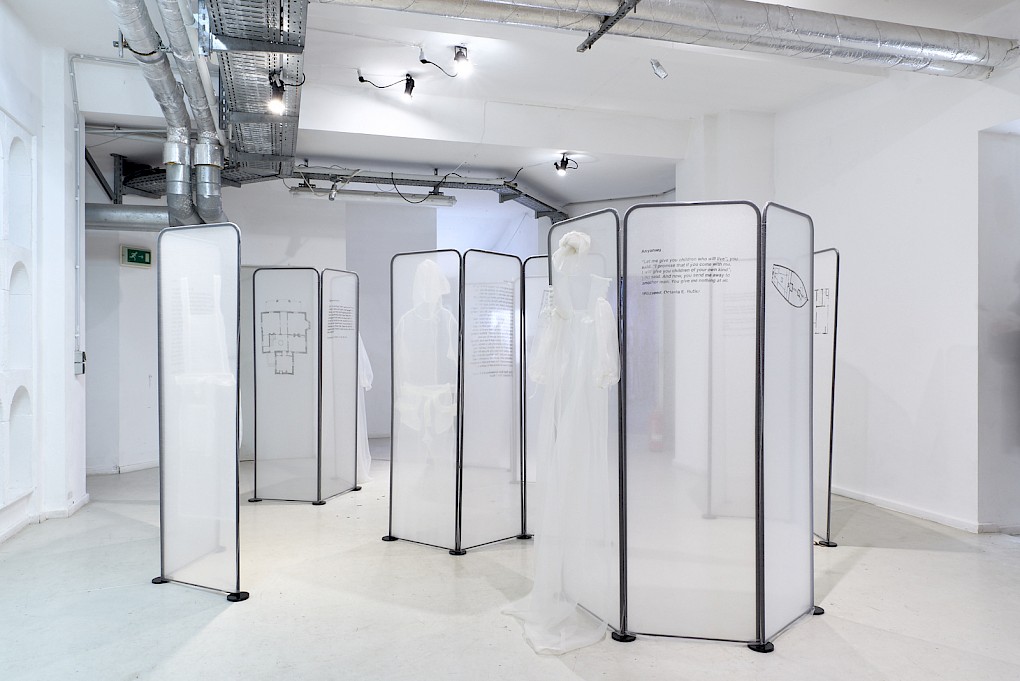
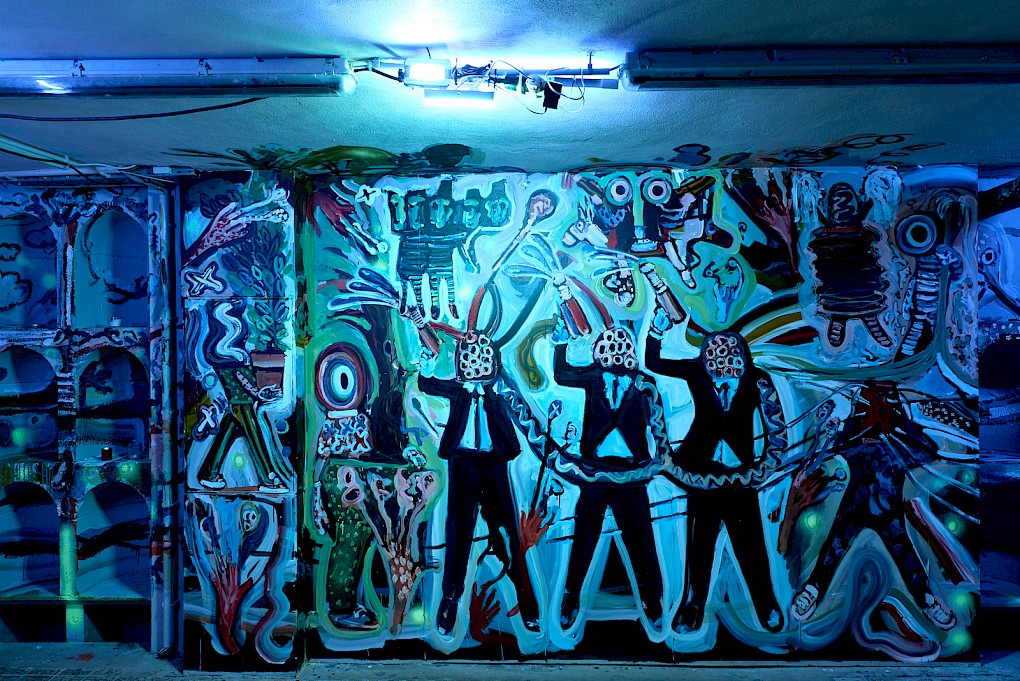
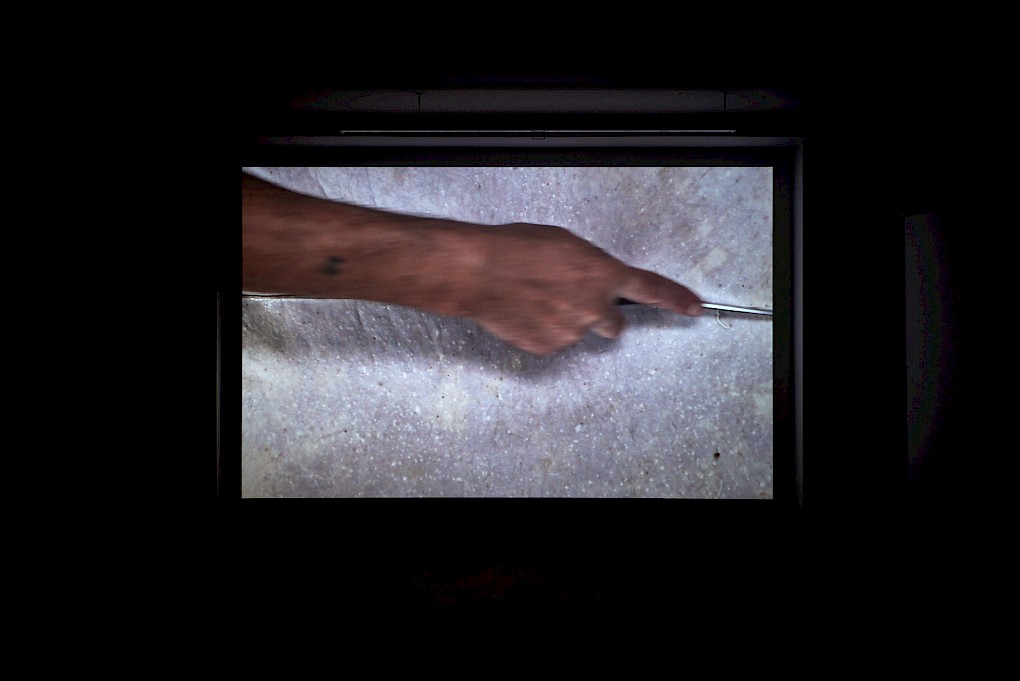
Artistic Director Bonaventure Soh Bejeng Ndikung
CURATORs Elena Agudio, Bonaventure Soh Bejeng Ndikung, Kelly Krugman
Team Lynhan Balatbat-Helbock, Abhishek Nilamber, Lili Somogyi
MANAGEMENT Lema Sikod, Jörg-Peter Schulze
COMMUNICATION Anna Jäger
Graphic Design Elsa Westreicher
PRODUCTION Abhishek Nilamber, Antonio Mendes
TECH Bert Günther
ART HANDLING Wilson Mungai, Kimani Joseph, Tibor Horvath, Bogdan Bălan
LIGHT Marold Langer-Philippsen
Ultrasanity. On Madness, Sanitation, Antipsychiatry and Resistance is a SAVVY Contemporary research, performance and exhibition project in multiple chapters, in collaboration with ifa Gallery Berlin, Association of Neuroesthetics (AoN_Platform for Art and Neuroscience), Picha Lubumbashi and Gnaoua Festival. The project is funded by the TURN Fund of the German Federal Cultural Foundation (Kulturstiftung des Bundes) and the Foundation of Arts Initiative. The work by Lukas Hofmann was commissioned by the Jindrich Chalupecky Society, and supported by the Czech-German Fund for the Future, and the Czech Centre Berlin. Alessandra Eramo’s work was commissioned by Deutschlandfunk Kultur, Klangkunst Program, to be broadcast in 2020.


